Bess’ Bigger Balls
Back over Memorial Day, I had the Brown Bess for an exercise to see what size ball shot the best. Last year, I was rather pressed for time and just took the conventional route and shot .69 ball using a paper cartridge. This would have been the standard load coming at the Patriots in the Revolution, the Lobsterback Special if you will.
The British were more concerned with fast reloading than they were with outright accuracy. So a really undersized ball was okay. With the paper and all it stayed down the barrel and allowed a soldier to fire multiple rounds without worrying about fouling.
Here I am in the 21st Century, trying to lob something at a whitetail deer. The 69 cal load worked okay going into last year’s Primitive Weapons Season, but I wanted to try and best my minute-of-pie-plate groups. I had already tried cloth patching and found it to be wanting. As it turns out cloth patches really did not become a fashion until the advent of rifled bores. Folks use a bunch of things for wadding: wool, tow, and wasp nests. I’ve said previously, ‘Bess demands imagination. It is a real mad scientist experiment– then and now.
I was using the SkyChief Method for a shot load back during Turkey Season. It gave me the best pattern of any. I had heard that some folks tried it with ball with good results. I thought I would give it a whirl and compare the 69 cal ball to the .715 and some .735 balls. The latter came as a gift from Blacksmith last year while I was still tied up with Chemo.
The .735 balls were noticeably better at 40 yards they shot cloverleafs. Before I had finished cleaning the Brown Bess, I had ordered my mould from BallMoulds.com. It seems odd to order something so simple all the way from England, but James Tanner does an excellent job at a decent price and shipping from the UK was not more than domestic shipping. I had it within two weeks, from start to finish.
Today, I made my first castings with the new mould. The one thing I noticed with this one, even more than the other two large ball moulds: cooling takes a long time. That is a lot of hot alloy going in, and if I did not wait at least twice as long to open the mould, I’d have molten lead pouring into the bucket.
/
This post has already been read 2368 times!
Views: 2


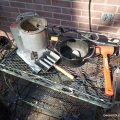
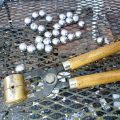


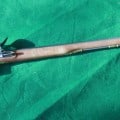
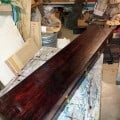

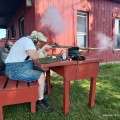
Comments
Bess’ Bigger Balls — No Comments
HTML tags allowed in your comment: <a href="" title=""> <abbr title=""> <acronym title=""> <b> <blockquote cite=""> <cite> <code> <del datetime=""> <em> <i> <q cite=""> <s> <strike> <strong>